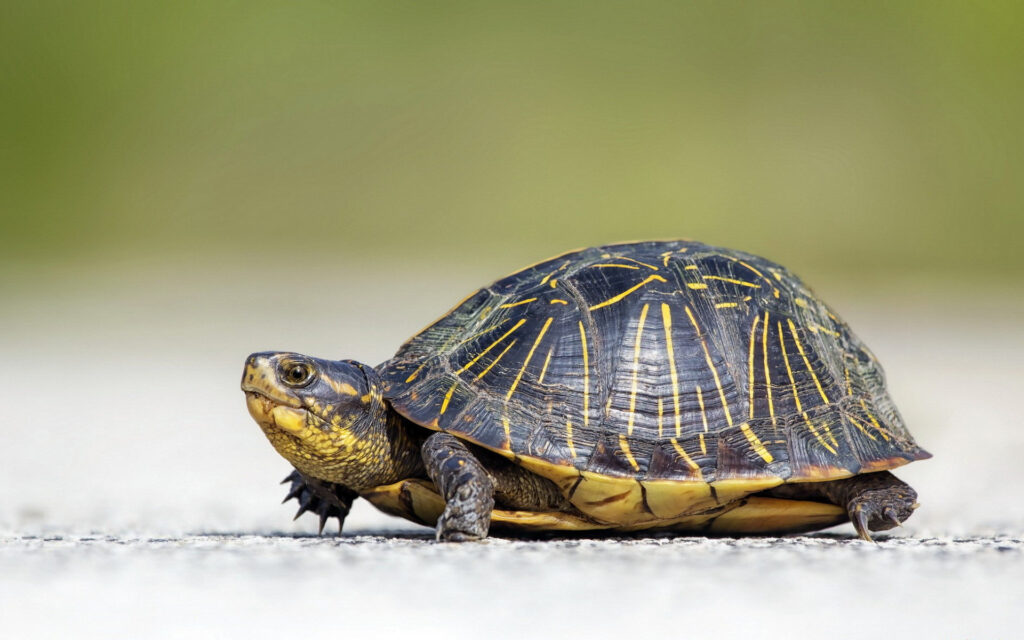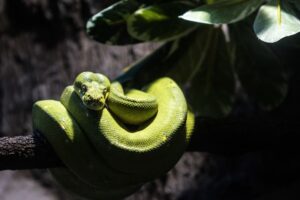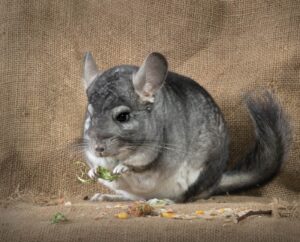Table of Contents
ToggleIntroduction
Turtles have long piqued the interest of nature enthusiasts due to their sluggish and steady manner. Do Turtles Eat Slugs? While most turtles eat water vegetation, insects, and small aquatic creatures. Whether turtles eat slugs adds an intriguing layer to our understanding of these tough reptiles.
Turtles, members of the Testudines order, live in various settings ranging from freshwater lakes to terrestrial terrain. Evolution and adaptation to their distinct habitats have developed their diverse nutritional habits.
Turtle Diet In General
Carnivores, Omnivores, and Herbivores: Turtles, which belong to the order Testudines, have a great diversity in their nutritional choices. Which is divisible into three categories: herbivores, omnivores, and carnivores. Herbivorous turtles primarily ingest plant matter and prefer aquatic or terrestrial plants. On the other hand, omnivorous turtles consume a more diverse diet that includes plant and animal items, such as insects or small marine organisms. Finally, carnivorous turtles live primarily on meat, capturing and digesting animals in their natural settings.
Dietary Preferences Differ Between Turtle Species: The world of turtles includes diverse species, each with its own nutritional needs. While some turtles are strict herbivores that eat just plants, others have a more flexible approach, integrating plant and animal stuff into their diets. The omnivorous lifestyle is especially widespread among box, painted turtles, and sliders, demonstrating their tolerance to various available food sources.
How Habitat and Size Affect Turtle Nutrition: Turtles’ nutritional needs are tightly bound to their environments and sizes. Aquatic turtles, for example, eat a lot of aquatic plants and small aquatic creatures, whereas terrestrial turtles eat a lot of terrestrial vegetation and insects. Furthermore, a turtle’s size can considerably impact its dietary requirements, with larger species frequently requiring more substantial amounts of food to meet their metabolic demands. Understanding these habitat-specific and size-related traits is important for both feeding turtles properly in captivity and figuring out how food affects the ecology of wild turtle populations.
Slug Characteristics
Definition and Characteristics of Slugs: Slugs, which belong to the gastropod class of mollusks, are curious organisms distinguished by their lack of an external shell, distinguishing them from shelled relatives such as snails. These soft-bodied gastropods move through rhythmic contractions, leaving a characteristic mucus trail behind them. Slugs roam their environs for food and suitable housing, with a slimy exterior and a pair of tentacles on their heads.
Ecological Involvement of Slugs in Ecosystems: Despite their humble appearance, Slugs serve critical functions in ecosystems. Slugs, as decomposers, help to break down organic matter, recycle nutrients, and facilitate nutrient cycling in soil. Their selective feeding habits on various plants alter vegetation dynamics, making them key participants in ecological equilibrium. Furthermore, slugs provide food for different predators, from insects to tiny animals, forging intricate links within food webs.
Turtle Interactions and Slug Habitats: Slugs flourish in various situations, preferring damp places such as gardens, woodlands, and grasslands. On the other hand, their interactions with turtles suffer from strict rules and regulations by the environments of both species. The gastropods become possible prey when omnivorous or carnivorous turtles find slugs while foraging in terrestrial settings. Aquatic turtles living in ponds or wetland areas may have less direct contact with slugs, yet encounters are still possible while basking or foraging near water sources.
Consumption Of Turtles And Slugs
Turtle Species and Diet Investigations: The study of turtle feeding patterns has revealed a fascinating range of preferences and flexibility. Scientists and hobbyists have studied turtle diets’ complexities to understand better the elements influencing their food choices. Observational studies, field research, and controlled tests have yielded useful insights into different foods that different turtle species may ingest.
Turtle Species that Eat Slugs: While not all turtle species enjoy slugs, there are some notable exceptions. It has been discovered that several turtle species, especially those with omnivorous inclinations, eat slugs. Box turtles, for example, enjoy invertebrates such as slugs, which adds a predatory aspect to their primarily plant-based diets. This variety in feeding choices among turtle species demonstrates the versatility and opportunism with which these reptiles forage.
Slug Eating Habits Vary by Location: The intake of turtle slugs must be more consistent across various locations. Location, environment, and the availability of alternative foods all have an impact on whether or not slugs are consumed by turtle populations. Turtles in certain habitats may encounter slugs more frequently, increasing the possibility that they may include them in their diet. The variation in slug availability and intake adds an intriguing layer to the ecological dynamics and nutritional strategies turtles use in various habitats.
Feeding Pet Turtles And Slugs
Considerations for Turtle Owners: Pet turtle feeding necessitates careful consideration of their natural food habits and nutritional requirements. Turtle owners should know their pet’s species, as various turtles have distinct food requirements. Understanding the turtle species’ biological activity, environment, and preferred cuisine is critical for delivering a well-balanced and healthy diet. Before adding slugs to a pet turtle’s diet, it’s crucial to determine whether slugs match the species’ natural food preferences.
Feeding Instructions for Pet Turtles and Slugs: Turtle owners who want to include slugs in their pet’s diet should adhere to certain procedures. To begin, make certain that the slugs come from pesticide-free areas. Variety is important; slugs should only be a small percentage of the overall diet. Excessive consumption of any dietary item might result in nutritional imbalances. Therefore, moderation is essential. Feeding slugs as a treat rather than a primary food source has support, and they can be provided live and pre-killed, depending on the turtle’s hunting tendencies.
Warnings and Measures for Pet Owners: While slugs can be a healthy addition to a pet turtle’s diet, One must use them. Cautiously. Some slugs may transmit parasites or poisons, especially if obtained from contaminated areas. As a result, it’s best to properly clean and check slugs before feeding them to pet turtles. Additionally, after introducing slugs, keep an eye on the pet’s behavior and health, looking for any adverse responses or changes in appetite. If the turtle shows any signs of disease, stop feeding it slugs and seek medical care immediately.
Conclusion
Turtles’ eating habits, notably their intake of slugs, disclose an intriguing facet of their involvement in the ecology. Turtles exhibit a varied range of feeding activities as omnivores, and the presence of slugs in their diet adds another depth to their ecological value. Turtle ingestion of slugs acts as a natural control mechanism for slug populations, helping to maintain the balance of varied species within their ecosystems. Understanding the complexities of the turtle’s diet, particularly slug ingestion, is critical for conservation efforts. Turtles play an important role in ensuring ecosystem health by managing the populations of other creatures.







